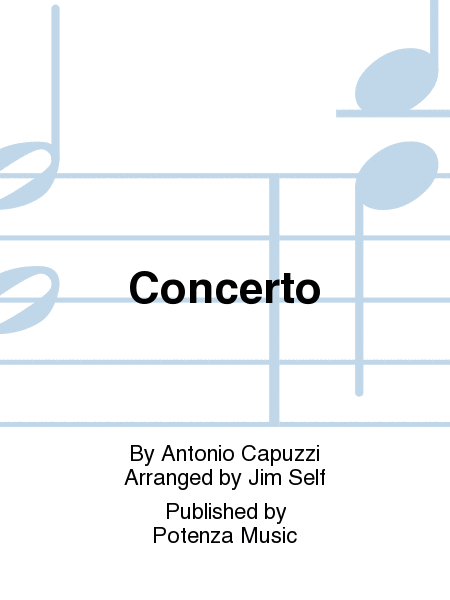Details
Description
SKU: P2.90131
Composed by Antonio Capuzzi. Arranged by Jim Self. Chamber music, 20th century. Published by Potenza Music (P2.90131).Capuzzi's Violone Concerto is a staple solo work for double bassists. It was written for the Violone (big viol), a five or six string predecessor to the double bass which, like the tuba, was a contra- bass instrument. This arrangement for Solo Tuba and Brass Quintet will give it new life and present tubists with a piece to perform with their brass colleagues. Giuseppe Antonio Capuzzi (1753-1818) was an Italian composer and violinist from Bergamo who, at times, lived in Venice and London. The work is a typical three movement classical concerto, fast-slow-fast. The Allegro moderato is in sonata form and opens with a brass quintet statement, solo tuba first theme, secondary theme and development. A tuba cadenza is followed by the recapitulation and an ending in the brass. The second movement is a beautiful Andante cantabile in the dominant. Short brass solos compliment the tuba throughout. The finale is a fast Rondo with a slightly slower section in the parallel minor. The movement ends with a technical flourish by the tuba and in all the brass. This piece works better for tuba than most transcriptions because doesn't require octave transpositions or an uncommonly high solo part. The Rondo was recorded by members of the Pacific Symphony Orchestra on Jim Self's CD, Changing Colors--Summit DCD 132.
Performance suggestions: This music is "classical" and needs a delicate touch--especially in the brass quintet accompaniment. A sense of balance with the solo tuba is paramount and forte passages should be tempered. An Eb Trumpet might be a good choice for the 1st part. A good seating would be in a semi-circle, in score order with the tuba opposite the 1st trumpet-- bell out to the audience.

 Share
Share